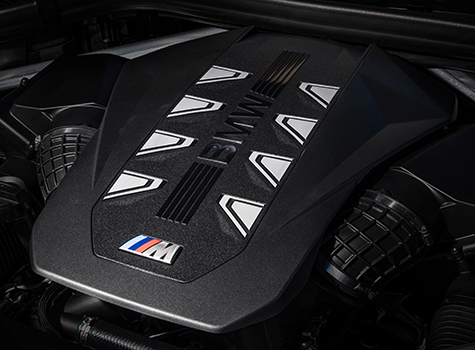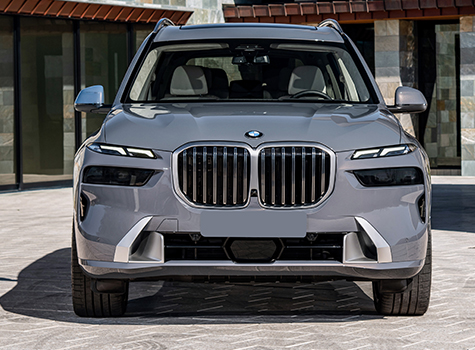Reconditioned BMW X7 Engines vs New – Which One is Better Choice
Reconditioned BMW X7 Engines vs New: The Ultimate Showdown
BMW X7 Engines sit at the heart of one of the most luxurious large SUVs on UK roads. When that powerhouse starts to show serious wear, owners often face a tough choice: order a brand-new unit or install one of the many Reconditioned BMW Engines offered by specialist workshops. Both routes promise to put you back behind the wheel, but the path you pick can shape your budget, driving experience and long-term peace of mind.
We will look at what “reconditioned” actually means, how costs stack up, how each option feels on the road, and why factors such as warranty cover and environmental impact matter more today than ever. By the end, you will have a clear picture of which solution best matches your needs, whether you use your X7 for family trips across the Pennines or regular business runs into the city. So, let us dive into the ultimate showdown between reconditioned and new BMW X7 engines.
What Does “Reconditioned” Really Mean?
A reconditioned engine is not a simple used engine taken from a breaker’s yard. Specialist technicians strip the original unit to its bare block, clean every gallery, and test and inspect each moving part against factory standards. Worn parts, such as bearings, piston rings, timing chains, valve guides, and gaskets, are replaced with new components. Critical surfaces are re-machined when required, and the cylinder head undergoes pressure testing to expose hidden cracks. Finally, the rebuilt engine is assembled, torqued to specification and bench-tested before installation.
The aim is to restore the engine as close as possible to its original performance without the full cost of a brand new engine. Because the bulk of the cast-iron or aluminium block is reused, material waste is low, and turnaround can be short when cores are already in stock. However, the quality depends heavily on the skill of the rebuilder and the grade of replacement parts. Reputable workshops offer test certificates and written guarantees. Understanding this spectrum is vital before you commit your X7 to any workshop.
Cost Considerations – Immediate Outlay vs Lifetime Value

A brand-new BMW X7 engine sourced through an authorised dealer can represent one of the largest single repair bills a BMW owner will ever face. The price reflects advanced alloys, strict quality control, and research and development costs. On the upside, you receive a full manufacturer warranty and the assurance that every seal and sensor is freshly minted.
A high-quality reconditioned engine usually costs much lower. Labour to rebuild is significant, but the reuse of the main block and ancillary housing cuts raw-material expense dramatically. Many specialists offer installation, fluid change and first service in one figure, helping owners avoid surprise extras.
Yet price should not be the only factor. Think about residual value. A dealer-documented new engine can boost resale figures, especially if the transferrable warranty remains. A reconditioned unit from a respected workshop can still reassure future buyers, but low-grade rebuilds recorded only as “engine replaced” on the logbook may raise eyebrows.
Performance and Driving Feel
A new engine delivers performance as same as the original showroom specification. This is ideal for owners who value the silky refinement that makes the X7 feel effortless on the road.
A reconditioned engine, if rebuilt to the same tight standards, can feel almost indistinguishable. Seasoned drivers often report a slightly freer revving character after break-in, as freshly honed bores and new piston coatings bed in. Modern rebuilders now install the latest software updates during final checks, which can improve throttle response and emission control compared to an older, untouched unit.
Reliability and Warranty Cover
Factory-fresh engines come with a warranty that reflects the brand’s new-car policy. Any manufacturing defect spotted within the period is fixed free of charge at BMW official workshops, and roadside assistance often carries over. Reconditioned engines come with varied cover. Trusted workshops commonly offer six to twelve months or a mileage-based promise, provided that approved oil and filters are used and services are recorded on time. Some extend the warranty to two years for an extra fee.
Always ask first whether labour cost and refit is included if a claim arises. Without this, you could face additional garage charges even when the core is repaired under warranty. Seek written terms rather than verbal assurances, and keep every invoice in a safe place. Good paperwork not only protects you if issues arise but also strengthens your car’s resale value later.
Environmental Footprint
Building a brand-new engine consumes raw ore, high-energy smelting and long transport routes from the foundry to the assembly line. While modern plants strive to reduce emissions, the embedded carbon remains substantial. Installing a replacement unit, therefore, carries a larger environmental cost than many drivers realise.
A reconditioned BMW X7 engine, by contrast, reuses most of the original casting. The process keeps heavy metal components in service for a second or even third life cycle and prevents bulky scrap from entering landfills. Less energy is required than melting down and recasting a brand-new block. When matched with high-quality replacement parts and precise machining, a reconditioned engine can hit near-new efficiency figures, meaning lower tail-pipe emissions as well.
Choosing reconditioned aligns with tightening UK environmental policy, especially in low-emission zones where older or poorly maintained engines face penalties. For eco-minded owners, the ability to extend the working life of existing materials without compromising drivability can tip the balance decisively toward a rebuild.
Availability and Downtime
Dealerships occasionally face back-orders on new X7 engines, especially for less common variants. Waiting for international shipping and customs clearance can leave your vehicle stranded for weeks. In contrast, many reconditioned engine specialists keep popular engines on their shelves. Turnaround can be as quick as a few working days once payment clears and your X7 arrives at the workshop.
Faster availability reduces secondary costs such as courtesy-car hire, public-transport fares or lost revenue if the vehicle is used for business. It also limits the risk of battery drain, tyre flat-spotting and interior damp that haunt cars parked motionless for long stretches. While no solution is instant, rebuilds still need fitting and running-in checks—the gap between downtime for reconditioned versus new can be significant, and that matters to owners who rely on their vehicle daily.
Future-Proofing and Resale Value
The BMW X7 remains a modern model, and buyers in the used market expect a service history that proves careful maintenance. A replacement engine, whether new or reconditioned, can reassure them that the most expensive mechanical component has been renewed.
With a new unit, the story is simple: it is factory fresh, supplied by the brand, and usually recorded in the central dealer database. Prospective buyers recognise this, and many will pay a premium. They also see the remaining portion of the long warranty as a safety net.
A reconditioned engine can carry almost the same weight if it comes with clear paperwork, a respected rebuilder’s stamp and results from post-install tests. Some independent buyer guides even praise high-quality rebuilds as evidence of proactive maintenance rather than neglect. Make sure invoices list part numbers, machining processes and warranty coverage. The clearer the paperwork, the easier it will be to command a strong price once you decide to part with the vehicle.
Practical Guide: Choosing the Right Option
Start by gathering full fault codes and a written assessment from a trusted diagnostic centre. Sometimes issues that feel terminal can be solved with far cheaper repairs, such as injector replacement or timing-chain overhaul. If a full replacement is confirmed, review your budget, mileage plans and how long you intend to keep the X7. Next, obtain parts prices from two or three sources. For a new engine, ask the dealer whether any goodwill assistance applies, particularly if the car has a complete service history. For reconditioned units, ask about the rebuild process step by step—machining standards, parts brands, bench-testing and warranty life.
Factor in peripheral costs: fluids, filters, upgraded cooling components and a mandatory oil change after the initial running-in period. Plan for a gentle break-in of around 1,000 miles with varied engine speeds but without sustained high load. This helps piston rings seat correctly and prevents glazing of freshly honed bores.
Finally, read reviews or forums for feedback on each engine supplier. Consistent praise for communication and after-sales support often signals a workshop that will stand by you if an issue arises with your X7 again. Inexpensive feel-good figures on an invoice are irrelevant if phone calls are left unanswered six months later. So be careful of these types of workshops.
Final Verdict
If you value maximum warranty length, have the funds available and intend to keep the vehicle for a decade or more, the new-engine route still shines. If you prefer a sensible balance of cost, quality and environmental responsibility, and are ready to vet your rebuilder carefully, a reconditioned unit stands out.
READ MORE